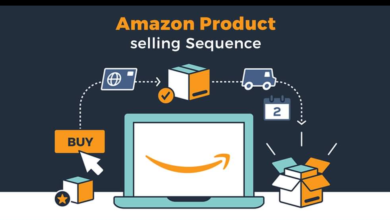Easy Steps to Create a Website or Blog: A Beginner’s Guide
How To Create Website With Your Phone

Easy Steps to Create a Website or Blog: A Beginner’s Guide create website or essentials blog with your smart phone.
Meta Description: Learn how to create a website or blog with these simple steps. No coding skills required! Start your online presence today.
Introduction: Creating a website or blog may seem daunting, especially if you don’t have coding experience. However, with the right tools and a step-by-step approach, you can build your online presence effortlessly. In this beginner’s guide, we’ll walk you through the process of creating a website or blog in simple and easy-to-follow steps.
Define Your Website’s Purpose: Start by defining the purpose and goals of your website or blog. Determine whether it will be a personal blog, an online portfolio, an e-commerce site, or any other type of website. This clarity will help you make decisions about content and design in the later stages.
Choose a Platform: Selecting the right platform is crucial for your website’s success. Consider using user-friendly website builders like WordPress, Wix, or Squarespace. These platforms offer intuitive interfaces, drag-and-drop functionality, and a wide range of customizable templates, making it easy for beginners to create professional-looking websites.
Pick a Domain Name: Choose a memorable and relevant domain name for your website. Ideally, it should reflect your brand or website’s purpose. Use domain registration services like GoDaddy or Namecheap to search for available domain names and register the one that best suits your needs.
Select a Template or Theme: Browse through the available templates or themes offered by your chosen platform. Pick a design that aligns with your website’s purpose and resonates with your target audience. Customize the template with your branding elements, including your logo, color scheme, and fonts.
Create Compelling Content: Craft engaging and high-quality content that is relevant to your website’s purpose. Develop a content strategy and create informative articles, blog posts, product descriptions, or any other form of content that resonates with your target audience. Use appropriate keywords and optimize your content for search engines to improve visibility.
Add Functionalities and Features: Enhance your website’s functionality by adding essential features such as contact forms, social media integration, and a navigation menu. Depending on your platform, you can install plugins or extensions to incorporate additional features like e-commerce functionality, analytics, or SEO optimization.
Optimize for Search Engines: Implement basic search engine optimization (SEO) techniques to improve your website’s visibility in search engine results. Focus on optimizing your page titles, meta descriptions, and headings with relevant keywords. Create descriptive URLs and ensure your website’s loading speed is optimized.
Mobile-Friendly Design: With the increasing use of mobile devices, it’s crucial to ensure your website is mobile-friendly. Choose a responsive template or enable responsive design features on your platform. Test your website on various devices to ensure it looks and functions properly across different screen sizes.
Publish and Promote: Once you are satisfied with your website’s design and content, it’s time to hit the publish button. Celebrate the launch of your website or blog by promoting it on social media platforms, reaching out to your network, and engaging with your target audience. Consider implementing marketing strategies such as content marketing, social media advertising, or email marketing to drive traffic to your website.
Defining the purpose and goals of your website or blog is essential for creating a focused and effective online presence. Here’s how you can determine the purpose of your website:
Identify Your Target Audience: Consider who your website or blog is intended for. Are you targeting a specific demographic, industry, or interest group? Understanding your target audience will help you tailor your content and design to meet their needs and preferences.
Determine the Primary Goal: What do you want to achieve with your website or blog? Is it to share personal experiences and insights, showcase your portfolio or work, sell products or services, provide information and resources, or something else entirely? Clearly defining your primary goal will guide your content creation and overall strategy.
Consider Secondary Objectives: In addition to the primary goal, identify any secondary objectives you may have for your website or blog. These could include building an email list, driving traffic to your social media channels, generating leads, or establishing yourself as an authority in your niche. Secondary objectives can help you plan your website’s structure and incorporate relevant features.
Research Your Competition: Analyze other websites or blogs in your niche or industry. Understand what they offer, how they communicate with their audience, and how they differentiate themselves. This research will give you insights into what works well and help you refine your own unique value proposition.
Define Your Brand Identity: Determine the overall branding and tone you want to convey through your website or blog. Consider aspects such as color schemes, typography, imagery, and language style. Aligning your brand identity with your purpose will create a consistent and memorable user experience.
Set Measurable Goals: Establish specific, measurable, attainable, relevant, and time-bound (SMART) goals for your website or blog. For example, you might aim to reach a certain number of monthly page views, increase newsletter sign-ups by a certain percentage, or generate a specific amount of revenue. Setting goals will help you track progress and make informed decisions.
Continuously Refine Your Purpose: As your website or blog evolves, be open to refining your purpose. Monitor user engagement, gather feedback, and adapt your content and strategies accordingly. Regularly reassessing your purpose will ensure that your website or blog remains relevant and aligned with your audience’s needs.
By defining the purpose and goals of your website or blog, you lay the foundation for a focused and successful online presence. This clarity will guide your content creation, design choices, and overall strategy, enabling you to effectively engage your target audience and achieve your objectives.
When choosing a platform for your website, it’s important to consider factors like ease of use, customization options, and available features. Here are three popular platforms that are beginner-friendly and offer a range of benefits:
WordPress: WordPress is a versatile platform that powers over 40% of all websites on the internet. It offers a user-friendly interface and a vast ecosystem of themes and plugins, allowing you to create a highly customizable website. With its intuitive content management system (CMS) and extensive documentation, WordPress is suitable for both beginners and advanced users. It also provides options for blogging, e-commerce, and various other types of websites.
Wix: Wix is a beginner-friendly website builder that provides a drag-and-drop editor, allowing you to create visually stunning websites without any coding knowledge. It offers a wide selection of templates catering to different industries and purposes. Wix also provides built-in features like Wix ADI (Artificial Design Intelligence), which guides you through the website creation process, and Wix App Market, which offers various apps to enhance your website’s functionality.
Squarespace: Squarespace is another popular website builder known for its visually appealing templates and user-friendly interface. It offers a seamless drag-and-drop editor, allowing you to customize your website’s layout and design effortlessly. Squarespace provides a range of features suitable for different types of websites, including e-commerce functionality, blogging tools, and built-in analytics. It also ensures that your website is mobile-responsive, offering a consistent user experience across devices.
When choosing a platform, consider your specific needs, such as the type of website you want to create, your budget, and the level of customization you require. Take advantage of free trials or demos offered by these platforms to explore their features and determine which one aligns best with your goals.
Remember, while these platforms offer user-friendly interfaces, it’s always helpful to invest time in understanding their functionalities and exploring tutorials and support resources provided by each platform. This will empower you to leverage the full potential of the chosen platform and create a professional-looking website that effectively represents your brand or content online.
Selecting the right domain name is crucial as it represents your website’s identity and helps visitors remember and find your site. Here are some steps to help you pick a domain name:
Reflect Your Brand or Purpose: Choose a domain name that aligns with your brand or clearly reflects the purpose of your website. It should give visitors an idea of what your website is about. Consider incorporating relevant keywords or phrases if they are appropriate for your brand.
Keep it Memorable and Easy to Spell: Aim for a domain name that is easy to remember and spell. Avoid using complex or unusual spellings that might confuse your visitors. Keep the name concise and straightforward to make it more memorable.
Consider Domain Extensions: Domain extensions are the endings of web addresses, such as .com, .org, or .net. While .com is the most common and widely recognized extension, consider other relevant extensions if .com is not available. For example, if you are targeting a specific country, a country-specific extension like .uk or .ca might be appropriate.
Check Availability: Once you have a few domain name ideas in mind, use domain registration services like GoDaddy, Namecheap, or similar platforms to check the availability of those names. These services will provide a search function that allows you to enter your desired domain name and see if it’s already registered or available for purchase.
Avoid Copyright and Trademark Issues: Make sure the domain name you choose doesn’t infringe on any copyright or trademark laws. Conduct a search to ensure that your chosen domain name is not already associated with an established brand or trademarked term.
Seek Feedback: If you have a few potential domain names, ask for feedback from friends, family, or your target audience. Their input can help you make a final decision and ensure that your chosen domain name resonates with your intended audience.
Register Your Domain: Once you have found an available domain name that suits your needs, proceed with registering it through your chosen domain registration service. Follow the steps provided by the service to complete the registration process and secure your chosen domain name.
Remember that your domain name will be a part of your online identity, so take the time to choose a domain name that accurately represents your brand or website’s purpose. By following these steps and using reputable domain registration services, you can find and register a memorable and relevant domain name for your website.
Choosing the right template or theme for your website is essential to create a visually appealing and user-friendly design. Here’s a step-by-step process to help you select and customize a template or theme:
Explore the Template/Theme Library: Start by exploring the template or theme library provided by your chosen platform. These libraries offer a variety of options catering to different industries, styles, and functionalities. Browse through the available templates or themes to get an idea of the designs that resonate with your website’s purpose.
Consider Your Website’s Purpose: Select a template or theme that aligns with your website’s purpose and target audience. If you’re creating a professional portfolio, a clean and minimalist design might be suitable. For a vibrant and creative blog, you might opt for a more colorful and dynamic theme. Ensure the template or theme enhances your content and effectively communicates your brand identity.
Evaluate Responsiveness and Mobile-Friendliness: In today’s mobile-driven world, it’s crucial to choose a template or theme that is responsive and mobile-friendly. Confirm that the options you consider automatically adjust to different screen sizes and offer a seamless user experience on smartphones and tablets. Test the responsiveness of the templates or themes you’re interested in before making a final decision.
Customization Options: Look for templates or themes that offer a high level of customization. This allows you to tailor the design to your brand identity and specific preferences. Pay attention to elements such as color schemes, font styles, layouts, and the ability to add your logo or other branding elements. The more customizable the template or theme, the more flexibility you’ll have in creating a unique and personalized website.
Read Reviews and Ratings: Before finalizing your choice, consider reading reviews and ratings of the templates or themes you’re considering. Feedback from other users can provide insights into the template’s or theme’s performance, ease of use, and level of customer support. Look for templates or themes that have positive reviews and a good reputation within the platform’s community.
Preview and Demo: Many template and theme libraries allow you to preview or demo the options before making a decision. Take advantage of this feature to see how the template or theme functions in a live environment. Pay attention to the layout, navigation, and overall user experience. Ensure it aligns with your vision and goals for your website.
Customize with Your Branding: Once you’ve selected a template or theme, customize it with your branding elements to create a cohesive look and feel. Add your logo, choose colors that match your brand palette, and select appropriate fonts that align with your brand identity. Customization options will vary depending on the platform you’re using, but most offer intuitive interfaces to help you make these adjustments.
Remember, the goal is to choose a template or theme that not only looks visually appealing but also enhances the user experience and effectively represents your brand. Take your time to explore various options, seek feedback if possible, and make an informed decision that aligns with your website’s purpose and resonates with your target audience.
Creating compelling and high-quality content is crucial for attracting and engaging your website’s visitors. Follow these steps to develop an effective content strategy and optimize your content for search engines:
Understand Your Target Audience: Research your target audience to gain insights into their needs, interests, and preferences. Identify the topics and information they are looking for related to your website’s purpose. This understanding will guide your content creation process.
Develop a Content Strategy: Define the goals and objectives of your content strategy. Determine the types of content you will create, such as articles, blog posts, videos, infographics, or product descriptions. Plan a content calendar to ensure consistent and timely publishing.
Keyword Research: Conduct keyword research to identify relevant keywords and phrases that your target audience is searching for. Use tools like Google Keyword Planner, SEMrush, or Ahrefs to discover keywords with high search volume and relatively low competition. Incorporate these keywords naturally into your content to improve its visibility in search engine results.
Write Engaging Headlines: Craft compelling and attention-grabbing headlines for your content. A captivating headline will entice users to click and read further. Use power words, create curiosity, or offer solutions to their problems. Experiment with different headline formats and analyze which ones perform best.
Create Informative and Valuable Content: Focus on creating content that is informative, valuable, and relevant to your target audience. Provide solutions to their problems, answer their questions, or share insights and expertise. Use a mix of text, images, videos, and other media formats to make your content more engaging and visually appealing.
Optimize for SEO: Incorporate SEO best practices into your content. Include your target keywords in the title, headings, and throughout the body of your content, but ensure it flows naturally and doesn’t feel forced. Write meta descriptions that accurately summarize your content and entice users to click on your website in search results. Optimize images with descriptive alt tags and compress them for faster loading times.
Use Clear and Concise Language: Write in a clear and concise manner to make your content easy to understand. Use short paragraphs, bullet points, subheadings, and other formatting techniques to enhance readability. Break down complex information into digestible chunks and avoid jargon or technical terms that may confuse your audience.
Proofread and Edit: Before publishing your content, thoroughly proofread and edit it for grammar, spelling, and factual accuracy. Ensure your content is error-free and presents a professional image. Consider using editing tools like Grammarly or Hemingway Editor to assist you in catching any errors or improving readability.
Encourage Engagement: Encourage your audience to engage with your content by inviting comments, questions, and feedback. Respond promptly to comments and interact with your audience to foster a sense of community and build relationships.
Analyze and Optimize: Regularly analyze the performance of your content using website analytics tools like Google Analytics. Track metrics such as page views, time on page, bounce rate, and engagement. Identify the content that performs well and optimize future content based on these insights.
By following these steps, you can create compelling content that resonates with your target audience, enhances your website’s visibility in search results, and drives engagement. Remember to consistently produce high-quality content and adapt your strategy based on audience feedback and analytics data to continuously improve your website’s content effectiveness.
arewanahiya.com







